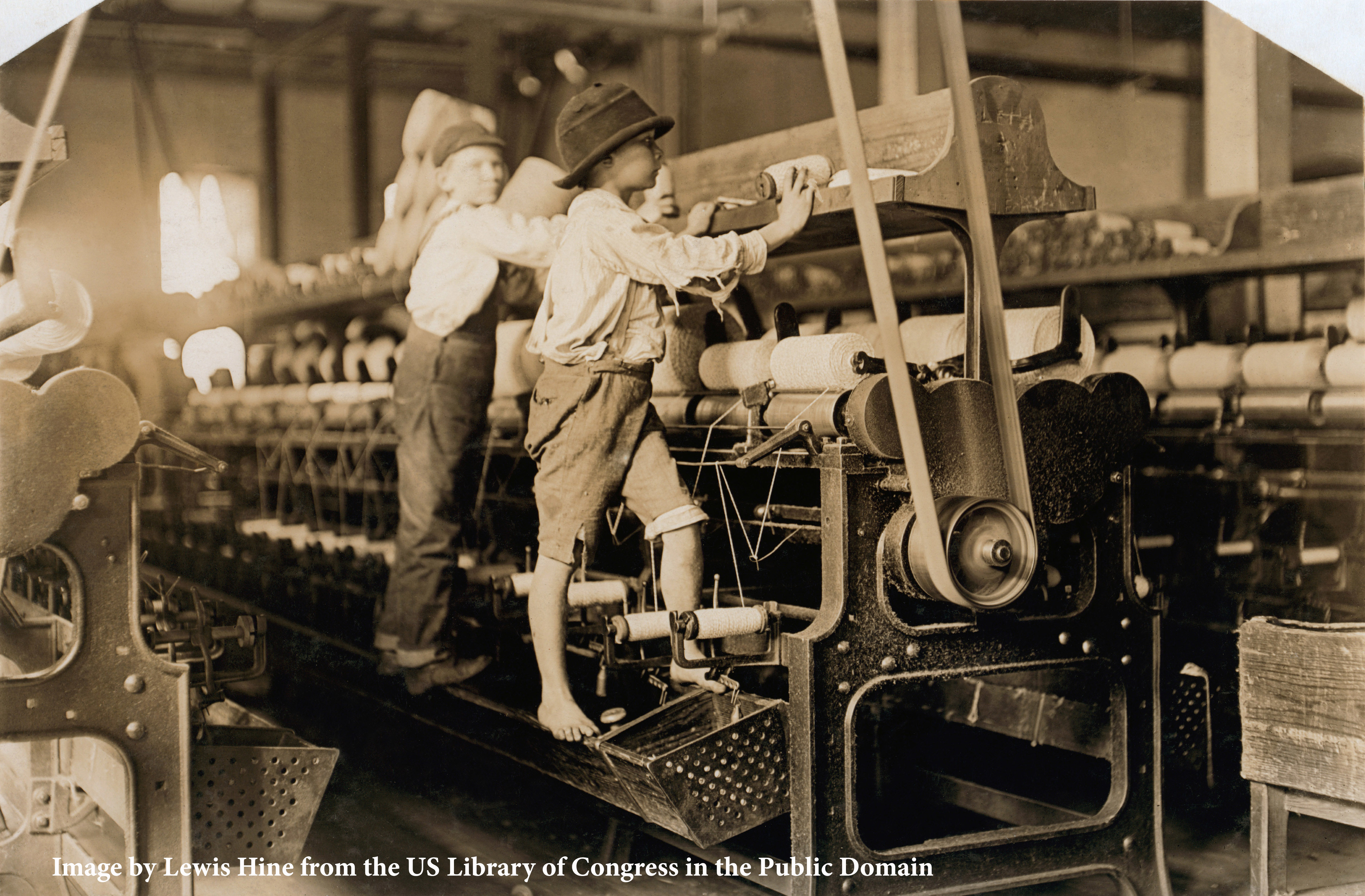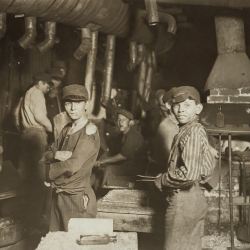Even as the Surgeon General bemoans the dangers of social media to young people, several states are enacting laws allowing those 14 and over to work without permits, reversing child labor laws enacted almost a century ago. How did we get to the point of curtailing the protection of our most vulnerable segment of the population?
One of the most poignant cases I recall handling was that of a youngster, age 13, whose hand was amputated by a restaurant meat processor where he was working illegally. The accident occurred as the workers were clowning around, chasing the youngster. The meat processor didn’t have a safety guard- and the child was too young to understand the dangers of running around in an unsafe environment, catching his hand in the unprotected opening. Unprotected food processors can do horrendous things to people.
Child safety laws were enacted in the United States to protect children from exploitation by greedy employers about 75 years ago. They were enacted earlier in Great Britain, where children as young as four were often  kidnapped, abducted, and sent to work in various hazardous occupations, such as chimney sweeps – where they suffered scrotal cancer.
kidnapped, abducted, and sent to work in various hazardous occupations, such as chimney sweeps – where they suffered scrotal cancer.
In the United Kingdom,
“[t]he campaign against child labour culminated in … the Factory Act (1833) and the Mines Act (1842). The Factory Act prohibited the employment of children younger than nine years of age and limited the hours that children between nine and 13 could work. The Mines Act raised the starting age … to 10 years. In effect, these two Acts brought the industrial districts into line with the rest of the country and brought an end to the systematic employment of young children.”
In the US, laws restricting women’s working hours or protecting children were initially contested by states seeking to maximize the economic benefits of such activities [1]. One by one, these cases and objections were struck down by the Supreme Court as incompatible with an advanced society.
The Child Labor Amendment of 1924 was approved by 28 states by 1937. But an additional eight states were needed to ratify the proposed amendment. In 1938, Congress passed the Fair Labor Standards Act, regulating employment of minors under 16 or 18, upheld by the Supreme Court in US v. Darby.
The Fair Labor Standards Act set up a comprehensive legislative scheme for preventing the shipment in interstate commerce of certain products and commodities produced in the United States under labor conditions as respects wages and hours which fail to conform to standards set up by the Act:
Decided in 1941, the Supreme Court ruled that the Commerce Clause allowed the Government to regulate employment standards in the production of goods that touch interstate commerce, extending the scope of the commerce clause.
The Court explained that the Commerce Clause gave the Government the power to prevent states from using sub-standard labor practices to gain an advantage in interstate commerce. While intrastate manufacturing of goods was not interstate commerce, shipping those goods across state lines made it interstate commerce. And because Darby’s lumber was sold across the United States, the Fair Labor Standards Act applied to Darby’s manufacturing activities.
True, states can set laws that only impact intrastate commerce- but Darby stretches the meaning of interstate commerce to any activity that bears on interstate commerce.
Flash forward to 2023
“A report from a policy group in Washington, DC, says lawmakers in at least 10 states have proposed easing child labor laws over the last two years. The bills would make it easier for children under 18 to work longer hours during school days and in more kinds of jobs.”
- In Arkansas, Governor Sarah Huckabee Sanders signed a law eliminating work permits for children under 16. Governor Sanders signed a law eliminating permits requiring employers to verify a child’s age and parental consent.
- In Iowa, Governor Kim Reynolds signed a bill last year allowing 16-year-olds to work unsupervised in childcare centers. This year, the legislature approved a bill to allow 16-year-olds to serve alcohol in restaurants and expanded the allowable limit on work hours. Governor Reynolds is expanding the relaxed law to let 16- and 17-year-olds work in certain manufacturing functions, such as operating power saws and working in demolition, allowing 14-year-olds to work briefly in industrial freezers and meat coolers and extending work hours in industrial laundries and assembly lines.
- In Wisconsin, legislators are backing a proposal to allow 14-year-olds to serve alcohol in bars and restaurants. The Ohio legislature is preparing to allow 14- and 15-year-olds to work until 9 pm during the school year with parental permission. Because this oversteps federal law, a companion bill is being introduced to ask Congress to amend federal laws.
Some legislators claim there is no reason why anyone should need the government’s permission to get a job - even as the Department of Labor reports that child labor violations have increased 70% since 2018. In 2021, 24 children died in work-related accidents. With the relaxed laws, additional violations will transpire unreported, along with more deaths.
All the while these states are allowing children to work (and giving them more temptations), other states are finding that teenagers are becoming more unruly – and are requiring chaperoning in public places. On April 18, the second largest mall in New Jersey began requiring anyone under 18 to be accompanied by a chaperone 21 or older on Fridays and Saturdays after 5 pm due to disruptive behavior in some younger visitors. Pennsylvania already has chaperone laws in some restaurants without chaperones.
Malls of America, the largest national shopping mall, enacted chaperone laws in 1996, increasingly tightening them since 2020. These rules apply to shopping centers, amusement parks, and restaurants, the same establishments now allowing children to work in other jurisdictions. The “bad behavior” among teens is said to be inspired by social media like TikTok.
The rationale states are raising for relaxing work regulations are the same as those raised in the early 1900s, later struck down by Congress and the court: economic considerations – too little, low-priced labor. The regulations enacted 75 years ago were prompted by the desire to protect our most precious commodity, our children, and were legislated as we watched harm accrue to these youngsters. What will it take this time? Don’t we ever learn?
The more things change, the more they go backward.
[1] Muller v. Oregon, featuring the famous Brandeis Brief, written mainly by his sister-in-law, Josephine Goldmark, contains 98 pages of statistical and epidemiological information regarding the hazards of overwork on women.
[2] Lochner v. New York, a minimum wage case.

